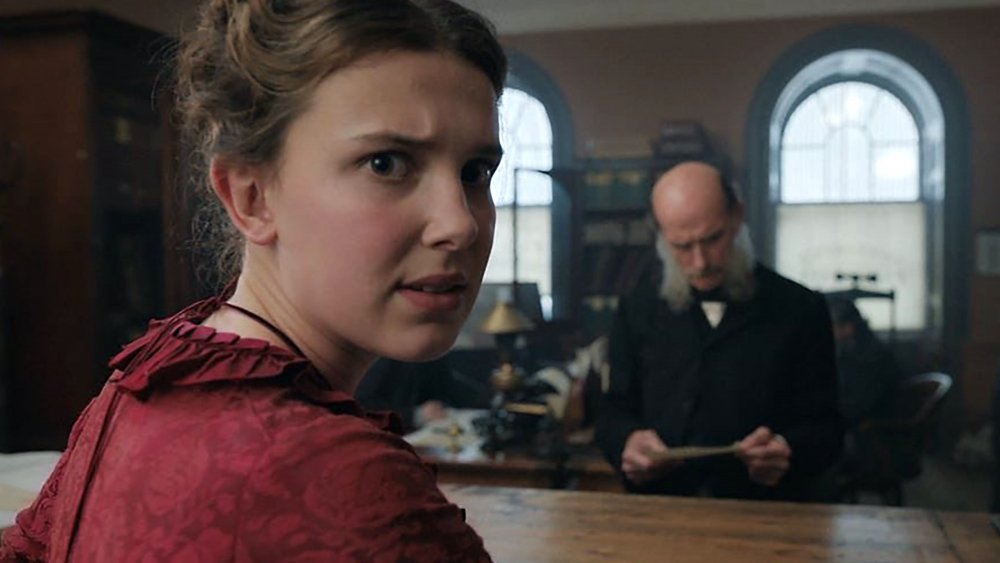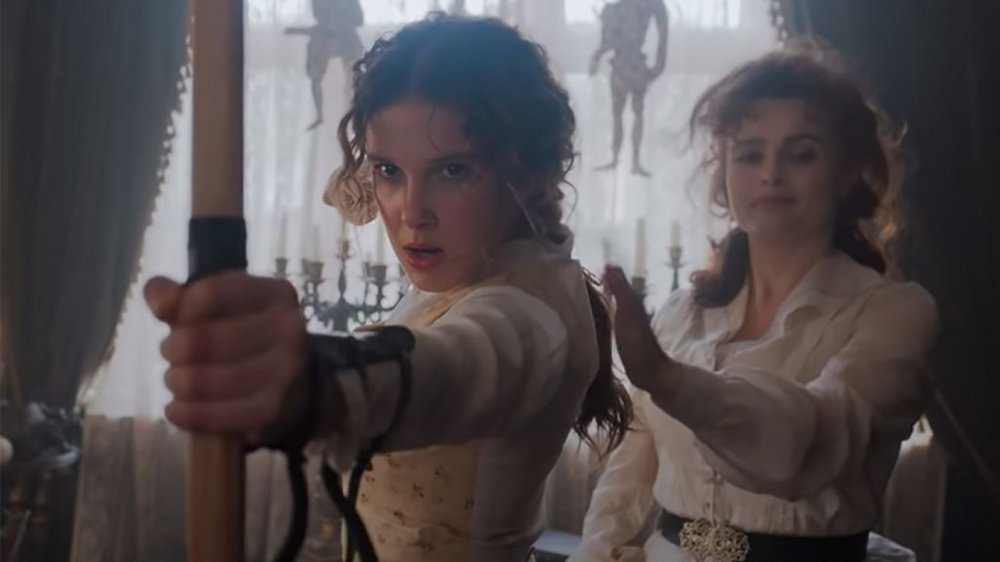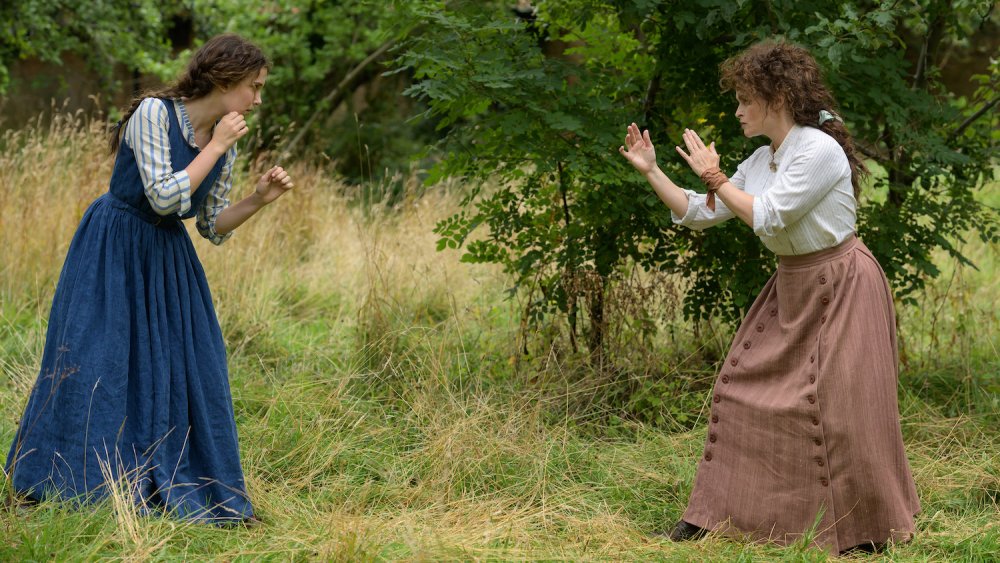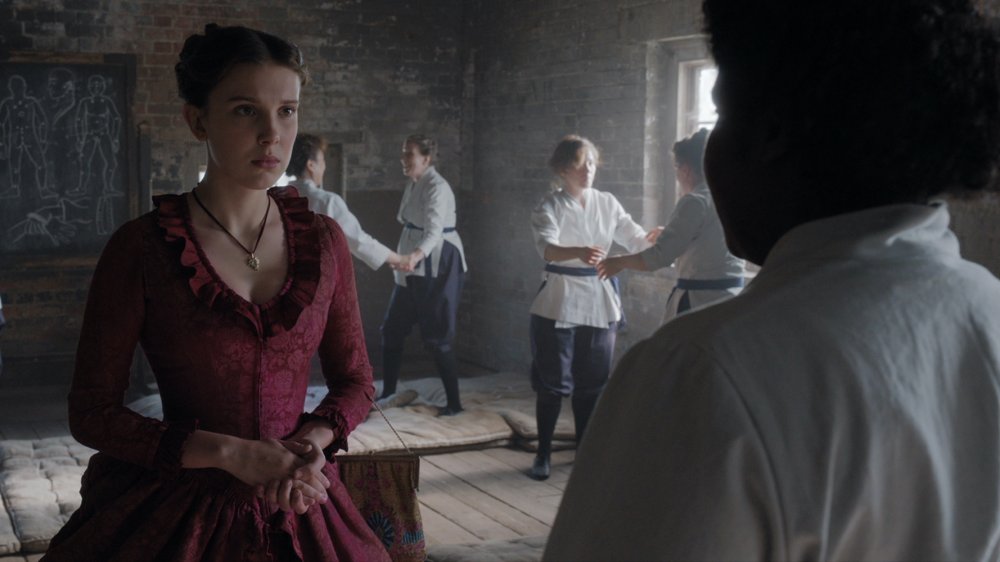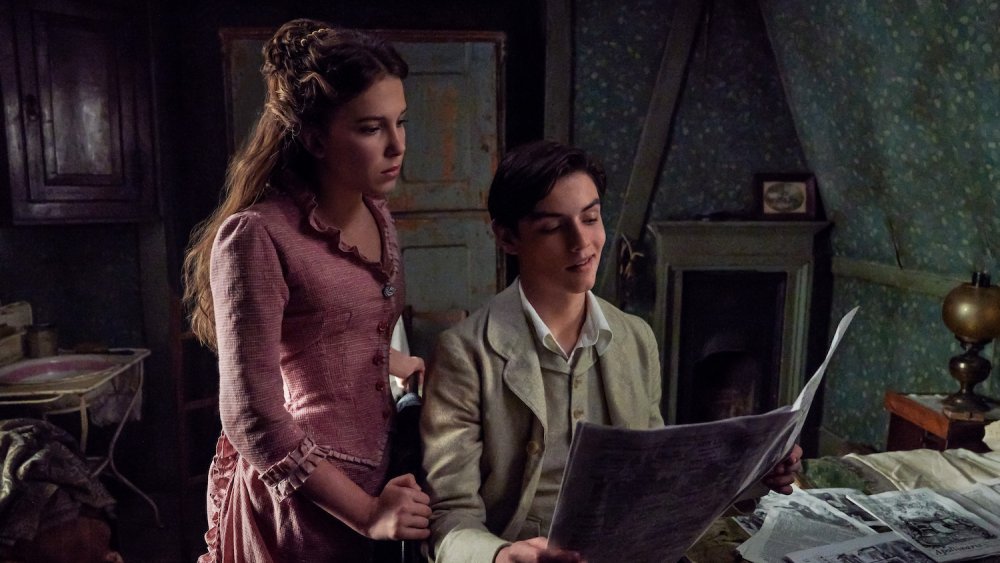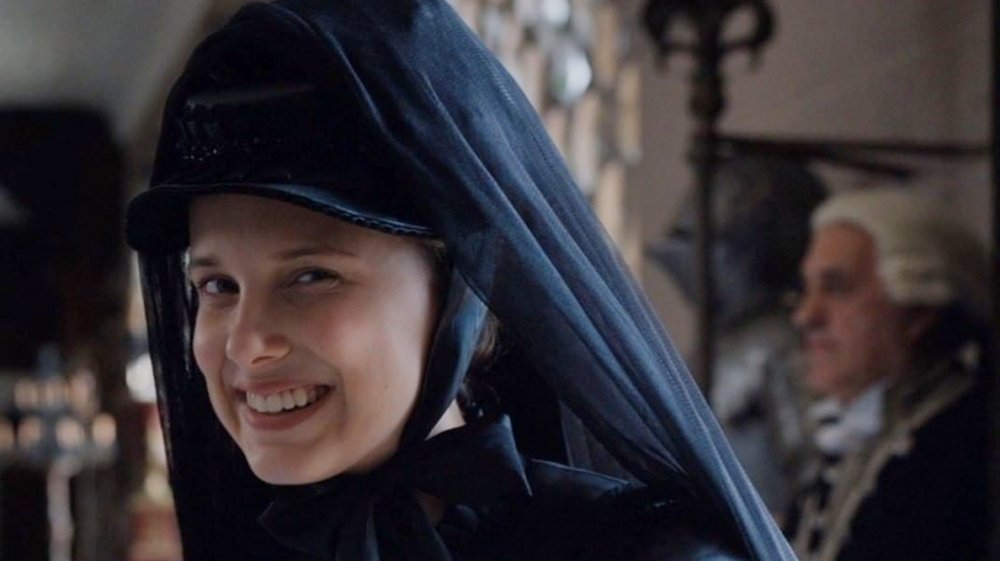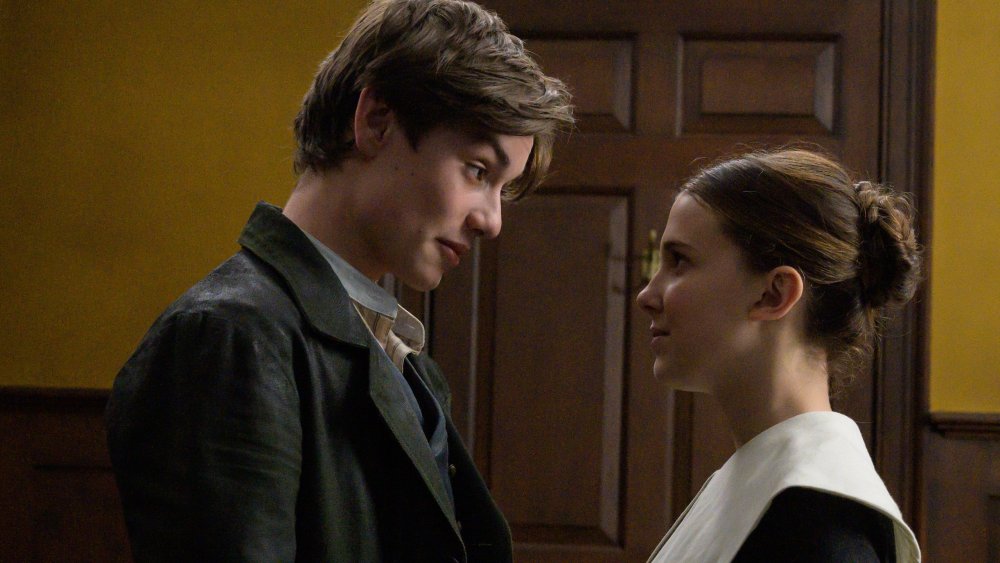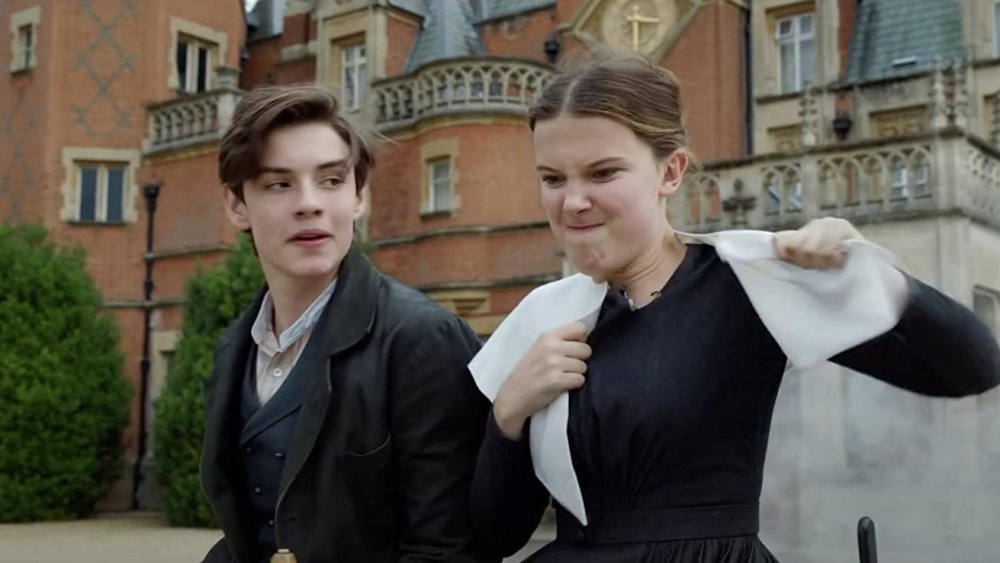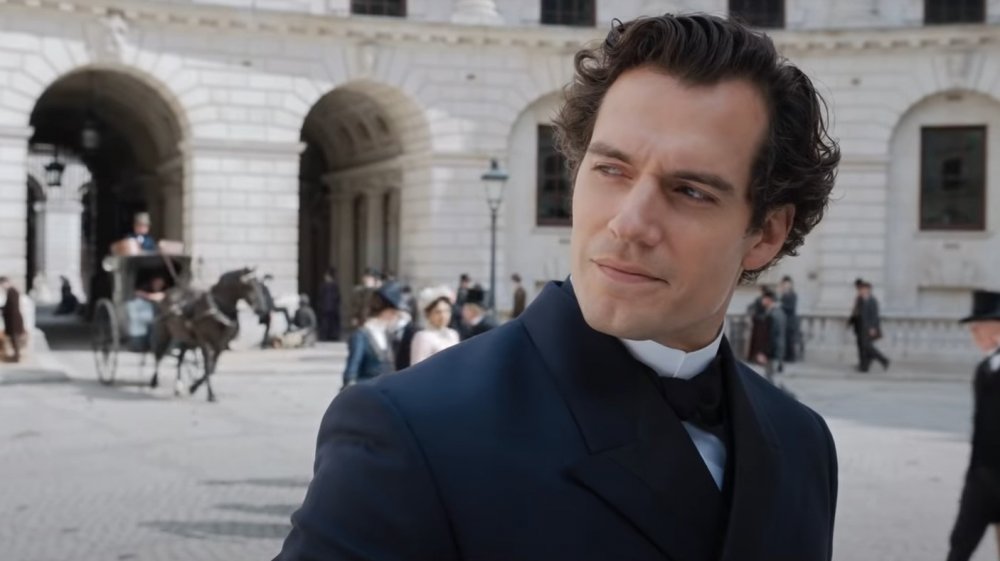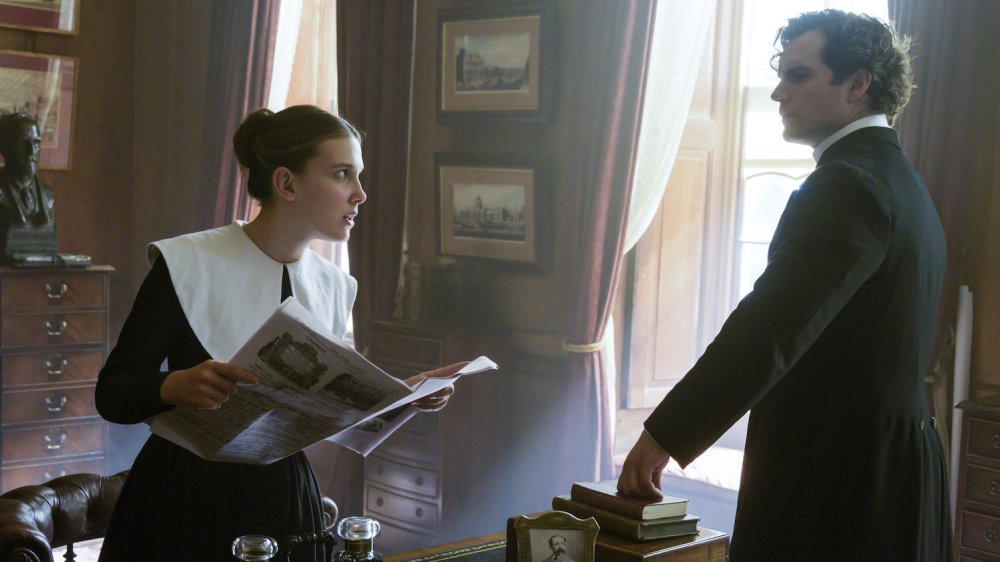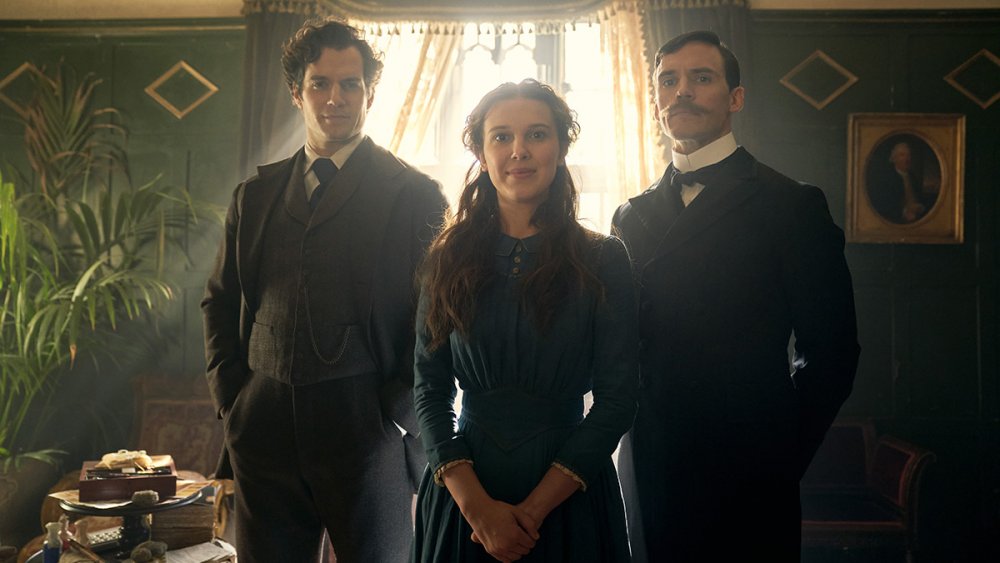The Ending Of Enola Holmes Explained
While screen adaptations of stories featuring the legendary detective Sherlock Holmes have always been overwhelmingly male-centric, that all changes with the release of Enola Holmes on Netflix. Starring Stranger Things' Millie Bobby Brown as the titular heroine — the younger sister of the renowned Sherlock — Enola Holmes delivers a classic mystery that still feels refreshingly relevant to modern times. The film also features Sam Claflin as eldest Holmes brother Mycroft, Helena Bonham Carter as family matriarch Eudoria, and Henry Cavill as Sherlock.
As with all Sherlock Holmes mysteries, Enola Holmes delivers a deliciously complex caper filled with surprising twists and turns, while Enola herself puts a fresh and feminist spin on the familiar formula. By the time the film reaches its conclusion, many of its mysteries have been neatly wrapped up thanks to the efforts of its teenage sleuth. But considering the film's habit of delivering its reveals in quick cuts and snappy dialogue, it's understandable if you still have some questions after reaching the end. That's why we're here to dive into the whys, hows, and whodunits that make up the ending of Enola Holmes.
Why did Enola's mother leave?
The central mystery at the heart of Enola Holmes is kicked off by the disappearance of Enola's mother Eudoria early in the film. While Enola's older brother Sherlock arrives to investigate their mother's disappearance, Enola isn't satisfied to leave it to him, especially when she realizes her mother has left behind an encoded message intended just for her. Thinking it means Eudrioa wants Enola to come after her, Enola sets out on a quest to follow the clues and solve the mystery of her mother's disappearance.
Eventually, Enola's sleuthing leads her to a warehouse on Limehouse Lane, marked with her mother's distinctive purple ribbon. Inside, Enola finds fliers for a meeting of the National Society for Woman's Suffrage, along with a pamphlet headed "Protest, Unrest, & Civil Disobedience," containing instructions for constructing an Orsini bomb. Moments later, Enola uncovers crates of these bombs within the warehouse, and worries about what her mother has gotten herself involved in.
We never actually learn the specifics of what Eudoria's women's suffrage group was planning, but it's safe to assume that it was dangerous and highly illegal. When Eudoria visits Enola at the end of the movie, she remains vague about the specifics of her plans, but does mention that she didn't tell Enola where she was going because it wasn't safe, adding that "You've got to make some noise if you want to be heard." Since we never hear of any sort of explosion or attack in Enola Holmes, it seems probable that whatever Eudoria was planning is still in the works.
Why did Eudoria leave clues for Enola?
Enola's quest to find her mother is kicked off when she realizes that the little box of gifts Eudoria left her contains a cipher. Its encoded message leads her to where her mother has hidden a large stash of money along with a cryptic note which reads "Our future is up to us." Enola interprets this as an invitation to follow after her mother, and immediately boards a train to London hoping to find her. As she searches, she repeatedly leaves ciphers of her own in a number of newspapers that she hopes her mother might read, then routinely scours the classified ads for a response. Enola is positive that her mother has left her a puzzle that only she can solve, and that once she does, she'll understand why she left in the first place.
But by the end of the film, it becomes clear that Eudoria never intended for Enola to come after her, and that Enola's actions have in fact taken her quite by surprise. But if she didn't want her daughter to follow her, why did she leave a trail of breadcrumbs for her to follow? Well, she probably didn't think that's what she was doing. More likely, she was hoping to reassure Enola that she was all right, and that no one needed to come after her. "Our future is up to us" was probably the closest Eudoria felt she could come to giving Enola an explanation for why she'd left — an explanation she didn't trust either of her sons to understand. And as for the money, Eudoria probably just wanted to make sure Enola was well provided for once she was gone, and never dreamed she'd use it to try to track her down.
What was Ellie Houseman?
Much is made in Enola Holmes of Eudoria's fondness for ciphers and anagrams, and she uses both to communicate with Enola. At first, when Enola overhears her mother talking about "Ellie Houseman" with her women's suffrage group, she assumes Ellie Houseman must be a person with some connection to her mother, and resolves to find her. However, she eventually realizes that Ellie Houseman isn't a person at all.
The three possibilities Enola hears her mother and the other women discussing in Eudoria's study are "The Bankman Met," "Entangle Herb," and "Ellie Houseman." All three of these turn out to be anagrams for London locations: the Embankment, Bethnal Green, and Limehouse Lane. The women were discussing possible locations for the next phase of their plan, and ultimately decided on the warehouse at Limehouse Lane. When Enola goes there to investigate, she finds activist fliers sitting alongside crates full of explosives, indicating that whatever Eudoria and her allies are planning isn't exactly going to be a peaceful protest. Enola never learns where the demonstration itself was going to be, since Limehouse Lane is just the location of their staging headquarters. Wherever it is, it's going to have to wait, since Enola destroys all the explosives in the warehouse while escaping the sinister Mr. Linthorn (Burn Gorman).
Who was trying to kill Tewkesbury?
When Enola meets Viscount Tewkesbury, the Marquess of Basilwether (Louis Partridge), he appears to simply be a sheltered young aristocrat yearning for a bit of freedom from his stifling list of responsibilities and expectations. But they both quickly learn that rather than his concerned family merely hiring a private investigator to bring him home safely, someone has actually hired a hitman to kill him. Enola suggests that it may be a member of his own family attempting to take him out, reasoning that someone close to him has a lot to gain by seizing Tewkesbury's vote in the House of Lords.
Enola's initial theory is that the culprit must be Tewkesbury's uncle, Sir Whimbrel (David Bamber), who would have inherited the estate in the event of Tewkesbury's death. Whimbrel would also have taken over Tewkesbury's spot in the Lords, giving him a pivotal vote on the upcoming Reform Bill.
However, it turns out that Enola was wrong — it was Tewkesbury's grandmother, the Dowager (Frances de la Tour), who was plotting his demise, not his uncle. The Dowager tips her hand when she talks to Enola after discovering her in Tewkesbury's treehouse. She tells Enola that the role of an ancestral landowner is to protect and preserve the old ideas of England in a rapidly changing world. This extends, in her mind, to resisting political change such as that contained in the upcoming Reform Bill. Although the Dowager cares for her grandson in her own way, she thinks his progressive ideas threaten her way of life, and the only way to safeguard the future of the country is to stop him before he can begin pushing for change.
What did Enola discover at Basilwether?
After Enola is attacked by Mr. Linthorn at Limehouse Lane in his attempts to find and kill Tewkesbury, she travels to Basilwether under the guise of being Sherlock Holmes' assistant, and also a widow in mourning. Although Tewkesbury's family resists her efforts to suss out clues about where the young Marquess might be, the resourceful Enola manages to find a way to continue her investigation anyway, switching clothes with a gardener in order to remain incognito.
While roaming the grounds of Basilwether, Enola comes across the tree branch Tewkesbury told her nearly clobbered him while he was out collecting wild mushrooms. At the time, Tewkesbury chalked up his near miss with death as a lightbulb moment, prompting him to run away from home and seek out the life he truly desired for himself. But Enola sees that the branch has been cleanly sawed through, indicating that someone — most likely Linthorn — intentionally dropped the branch on the boy, meaning that the effort to kill him started before Tewkesbury ever got it in his head to run away.
She then finds Tewkesbury's treehouse, in which he'd planted the breadcrumbs that led Linthorn to Limehouse Lane. Enola quickly realizes what Linthorn missed — that the Limehouse Lane clues were deliberately intended to misdirect anyone who might pursue him. She discovers his real destination by looking at which parts of his books seem the most well-visited, with pressed flowers between the pages indicating his intent to reinvent himself as a flower merchant at the Covent Garden Market.
How did Tewkesbury survive?
Despite multiple attempts to kill him throughout Enola Holmes, Tewkesbury manages to walk away more or less unscathed every time due to a combination of luck, timely assistance, and quick thinking. However, it appears as though his number's finally up during the climax of the film, when the Dowager finally reveals herself as the mastermind behind the assassination attempts, and takes it upon herself to shoot him in the chest with Linthorn's shotgun. Tewkesbury is knocked flat on his back, and Enola assumes he must be dead after taking such a devastating shot at close range.
But moments later, Tewkesbury sits up, revealing that the shotgun pellets were stopped by a metal plate he was wearing under his shirt. Considering that Tewkesbury hadn't known they were heading to Basilwether until Enola made a spur-of-the-moment decision, when did he have the opportunity to don a makeshift bulletproof vest?
The last we see of Tewkesbury before he attacks Linthorn, he watches a bullet deflect off the metal chestplate right beside his head. The plate came from a suit of armor that Linthorn had shot previously, causing the scattered pieces to fall around Tewkesbury. Although we don't see him take this action, Tewkesbury must have quickly grabbed the chestplate and tucked it underneath his own shirt as protection before jumping back into the fight. It didn't help when Linthorn was trying to strangle him, but proved pivotal when his grandmother shot him.
What was the Reform Bill that Tewkesbury was voting on?
The plot to assassinate Tewkesbury all boils down to his vote on the Reform Bill in the House of Lords. Before Tewkesbury found himself in his grandmother's crosshairs, his father had been in favor of the Reform Bill, and had passed his ideology along to his son before his mother-in-law had him killed. The Dowager is staunchly opposed to the Reform Bill, firm in her belief that the best thing for the future of the country is to keep things just as they always have been, and to actively resist significant change.
But what exactly was the Reform Bill, anyway? Enola Holmes never gives us a clear picture of what's at stake, although several characters do mention that it has to do with expanding the vote, and when she arrives in London, Enola sees an activist who says the bill would allow "votes for all men."
Although there are several Reform Bills in British history, the one at the center of Enola Holmes is the Third Reform Act of 1884, which extended the right to vote to male tenants and landowners in the countryside — a right previously held only by men in the towns. It significantly expanded the British electorate, making it an important step on the road toward universal suffrage. However, despite its great strides forward, the Reform Bill that Tewkesbury votes on at the end of Enola Holmes was far from perfect: It left 40 percent of men and all women without a vote — and left Enola and her mother with a lot of work yet to do.
What was the significance of the pinecone at the end?
Before Enola takes off on her search for her mother, Sherlock recalls one of his few memories of his sister when she was a child. He says that little Enola heard that Queen Victoria had a cavalier King Charles spaniel called Dash, and wanting to be like the Queen, young Enola wrapped a pinecone in wool and dragged it around the house behind her on a string, also calling it Dash. Sherlock later finds the wool-wrapped pinecone under Eudoria's pillow, and brings it to Enola when he visits her at boarding school. When he returns it to her, he tells her that he finds her extraordinary, and that the choice about whether she'll conform to society or blaze her own path is always up to her.
At the end of the film, Sherlock leaves Enola a coded message posing as their mother, in the hopes that she'll still come to meet him out of sheer curiosity. As he waits, he asks Mycroft if he can be Enola's guardian, to which Mycroft readily agrees. Giving up on Enola, they both leave, but then Sherlock notices that Enola has left Dash on the base of the statue at the center of the courtyard. He looks around for a minute, smiles, then replaces the pinecone and walks away without telling Mycroft what he saw. Given their earlier conversation, this is likely Enola's way of letting Sherlock know she's decided to make her own way in the world, and his way of giving her choice his blessing.
What did Eudoria mean when she thanked Enola for her irises?
When Eudoria and Enola finally reconnect at the end of the film, Eudoria says something that could seem rather odd if you haven't been paying close attention when she tells Enola, "Thank you for my irises." Flowers play an important role throughout Enola Holmes, from Eudoria's very first clue ("Enola, look in my chrysanthemums") to Tewkesbury's passion for foliage leading to his decision to hide in a flower market. And of course, at the beginning of the film, Eudoria leaves Enola a collection of hand-painted cards of flowers, each with its own associated meaning.
When Enola is leaving her mother encoded messages in various newspapers earlier in the film, she refers back to these cards, breaking the fourth wall to tell the viewer that "iris means message." We then see that the iris card from her mother reads, "I have a message for you," and Enola's newspaper message to her mother asks her to "send iris please." While there's no need for Eudoria to still be speaking in code when she sees Enola in person again, it seems that Eudoria has developed a fondness for the flower symbolism, and has decided to keep using it as a secret shared language between her and her daughter even when she doesn't have to.
What's next for Enola?
Although the mystery of the missing Marquess and the case of the disappearing mother have both been solved by the end of Enola Holmes, the film is still pretty open-ended when it comes to Enola herself. Her mother is still in hiding, working with her fellow suffragettes to make a better world through political activism (and possibly some not-so-civil disobedience). Mycroft has gratefully passed guardianship of Enola to Sherlock, and Sherlock has in turn decided to let Enola forge her own path instead of forcing her back under his roof.
So what is that path? It's a little unclear, although it definitely seems now that Enola's gotten a taste for detective work, she's not inclined to give it up anytime soon. She closes out her story by declaring, "I am a detective. I'm a decipherer. And I'm a finder of lost souls. My life is my own, and the future is up to us." She then rides off into the bustling London streets for destinations unknown. It definitely leaves the door open for future Enola Holmes films, in which she could either team up with Sherlock to solve a case or continue to establish a name for herself independent of her famous brother. Whatever happens, we can be sure that Enola will continue fighting for equality and justice no matter where her journey takes her.
